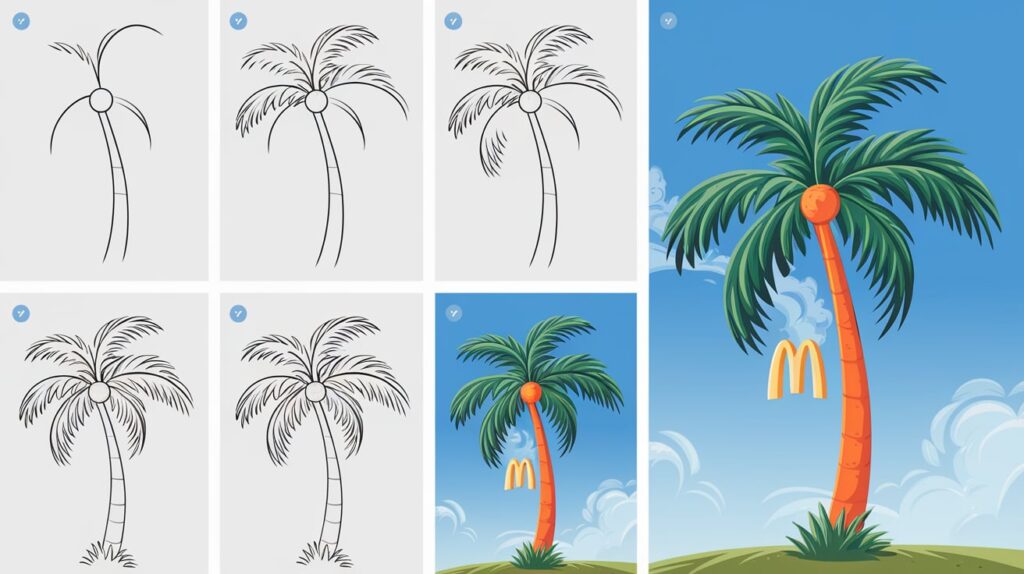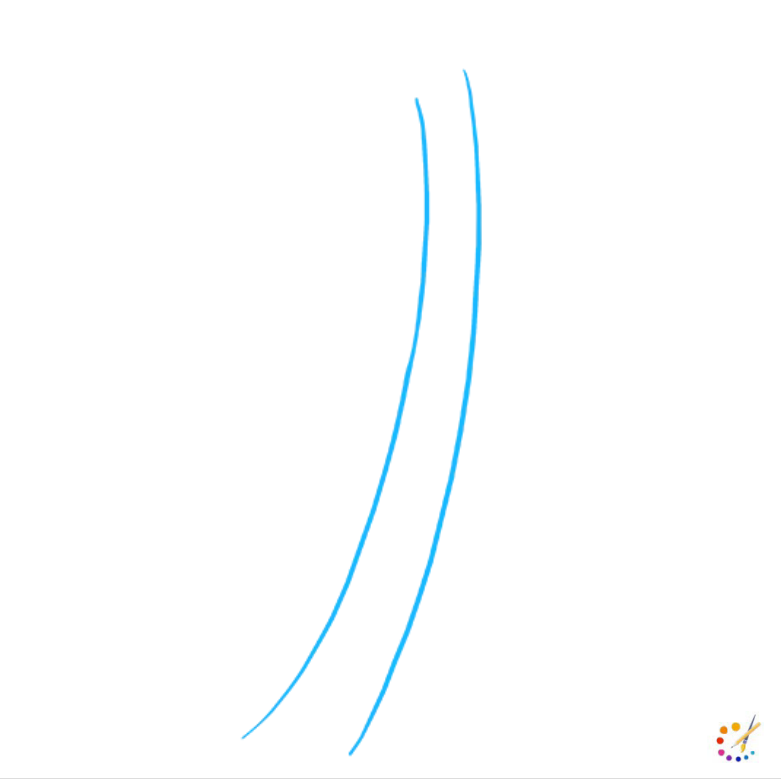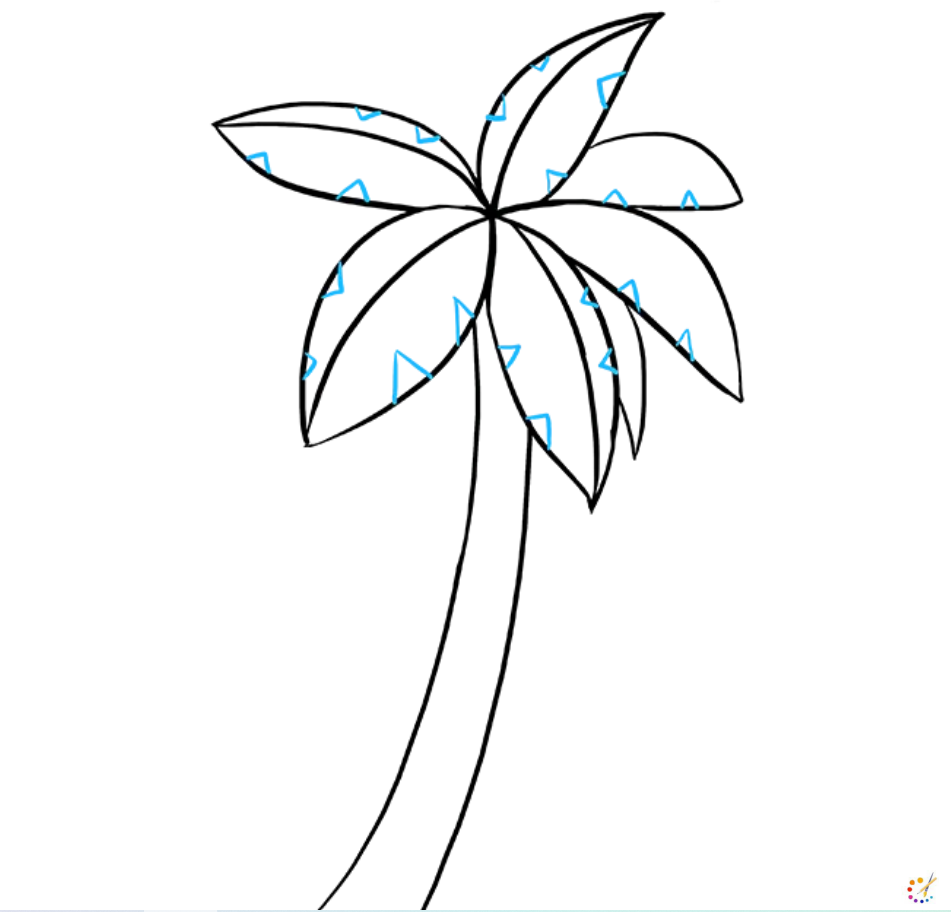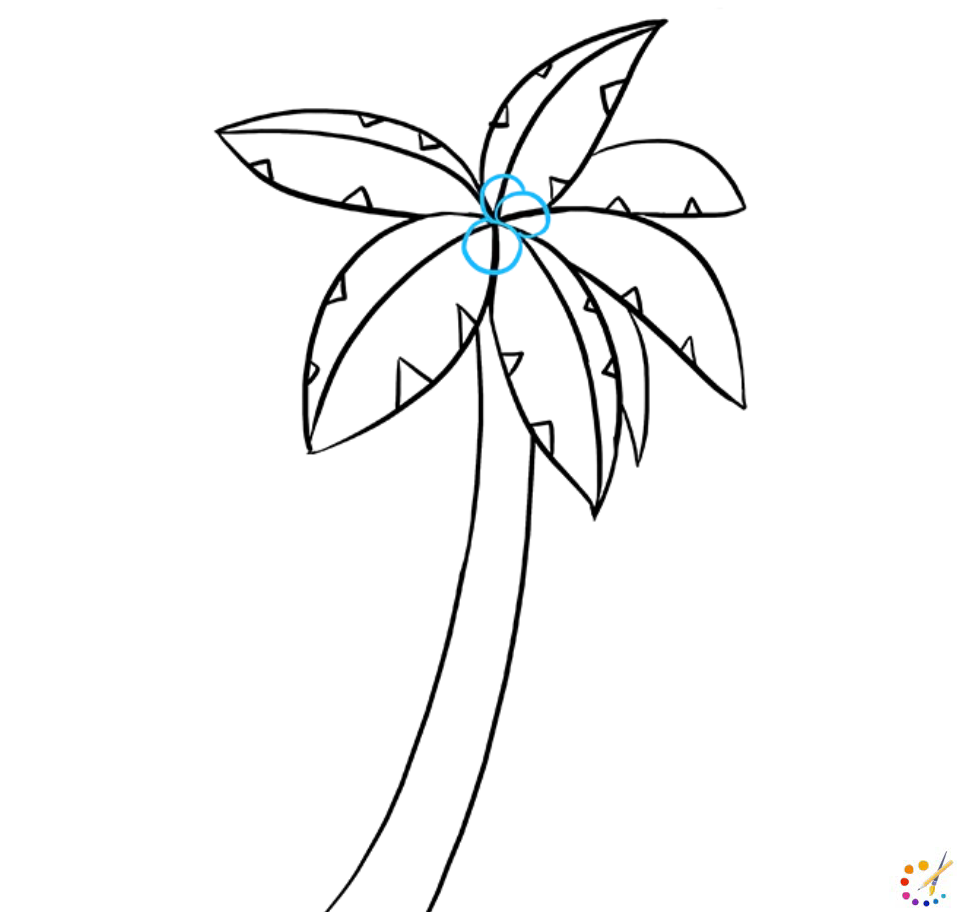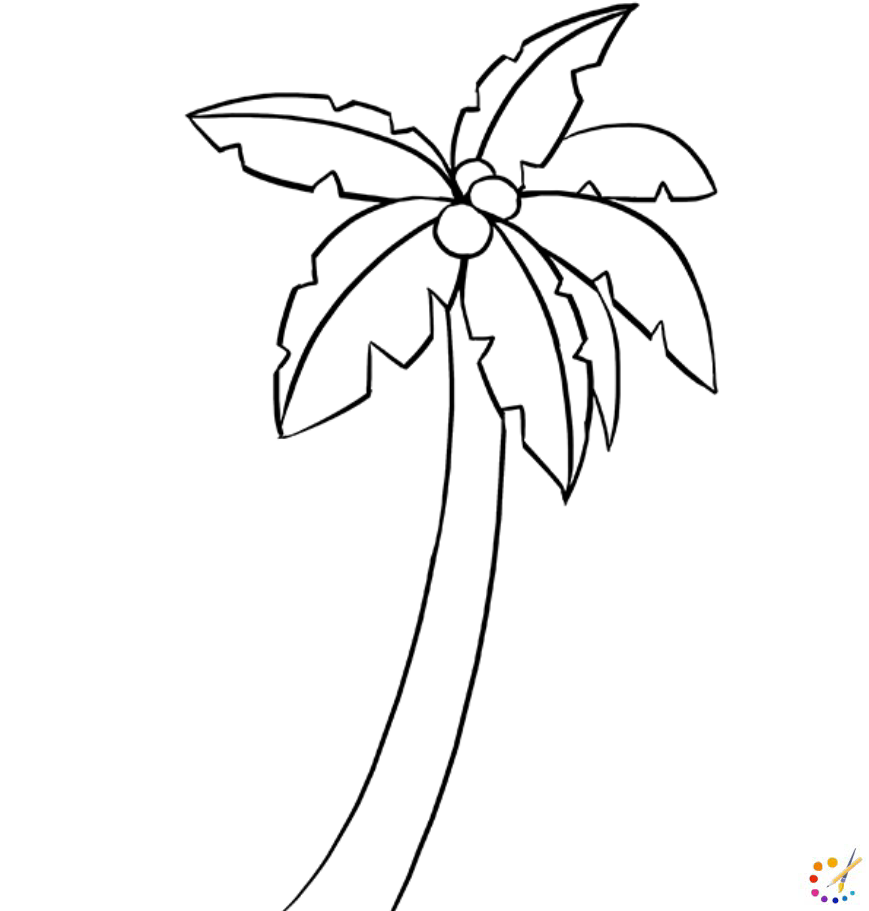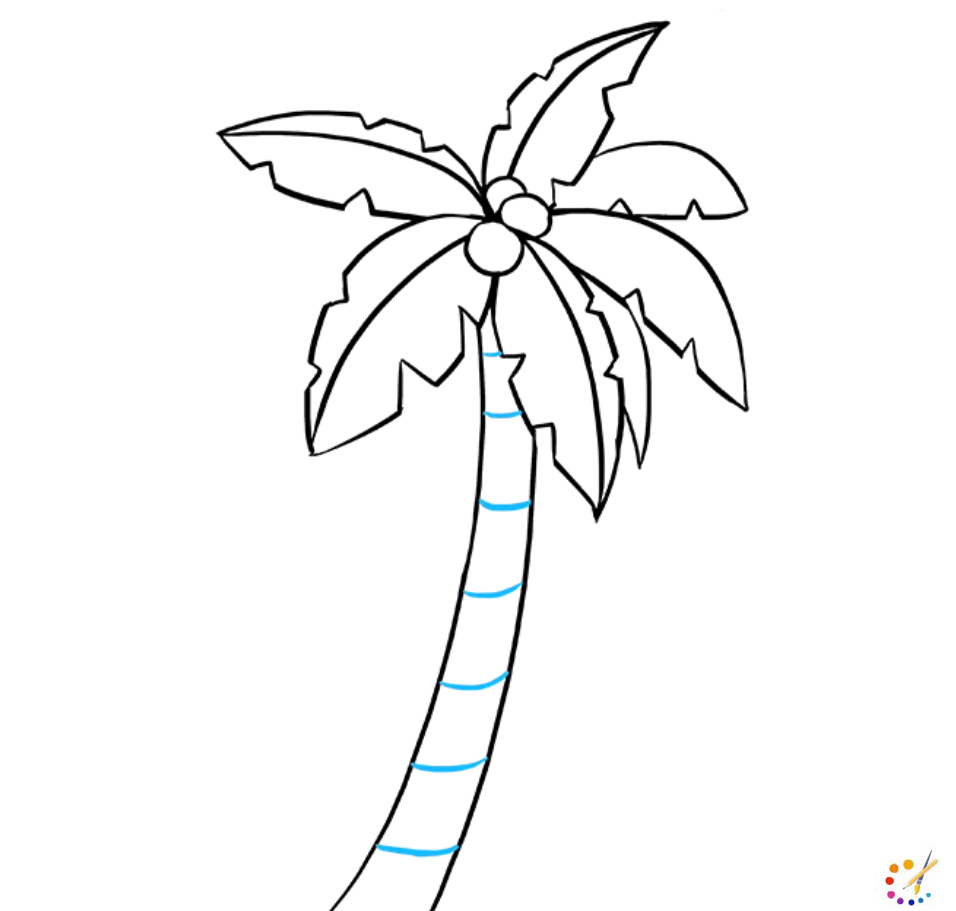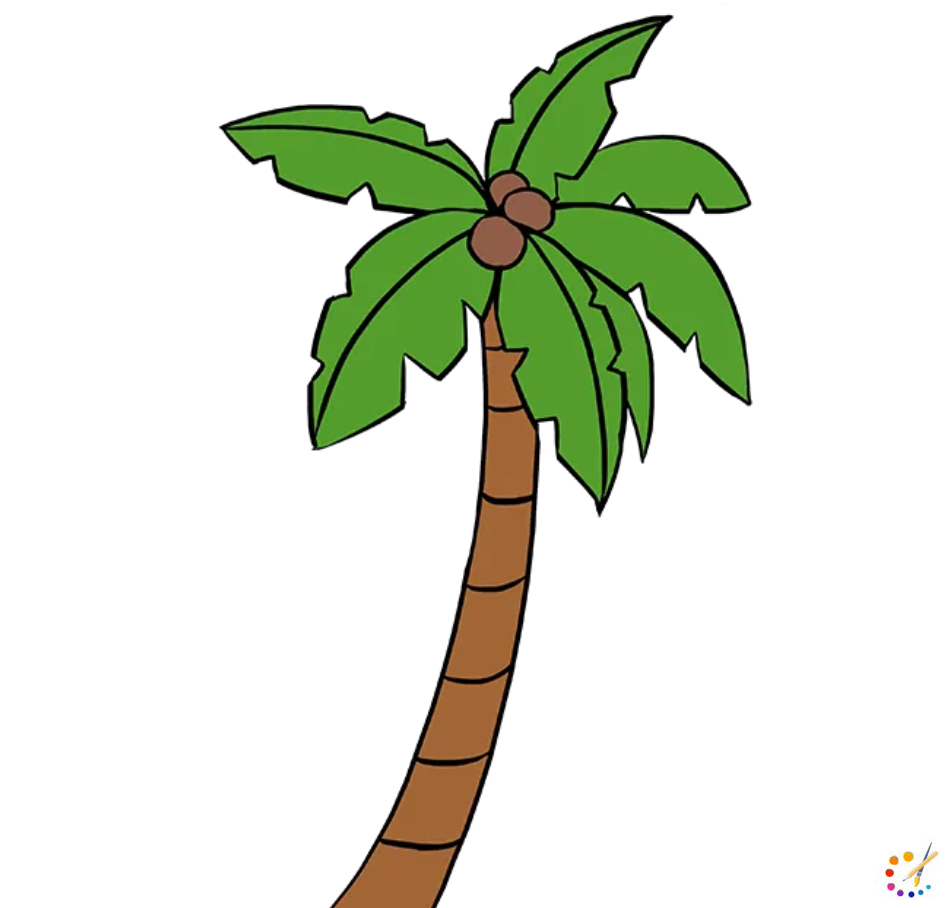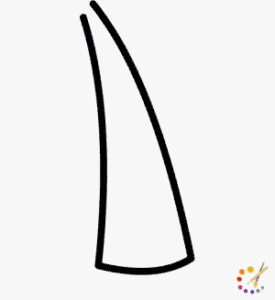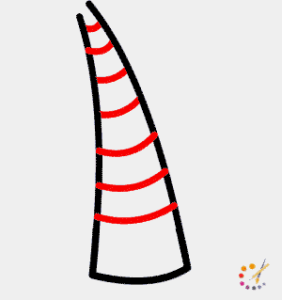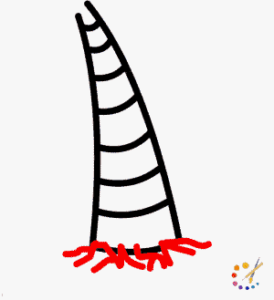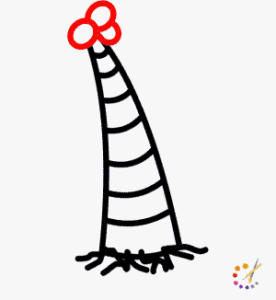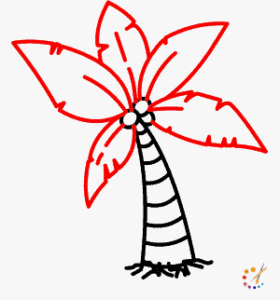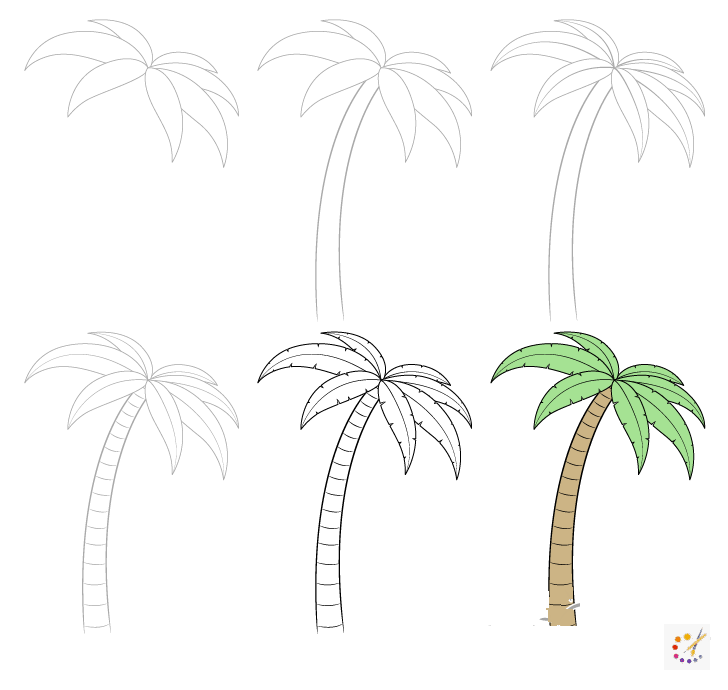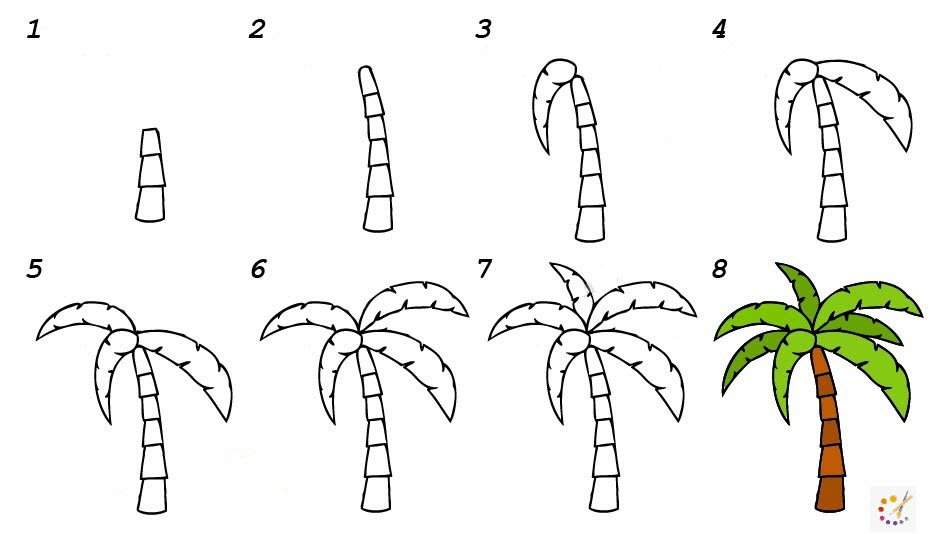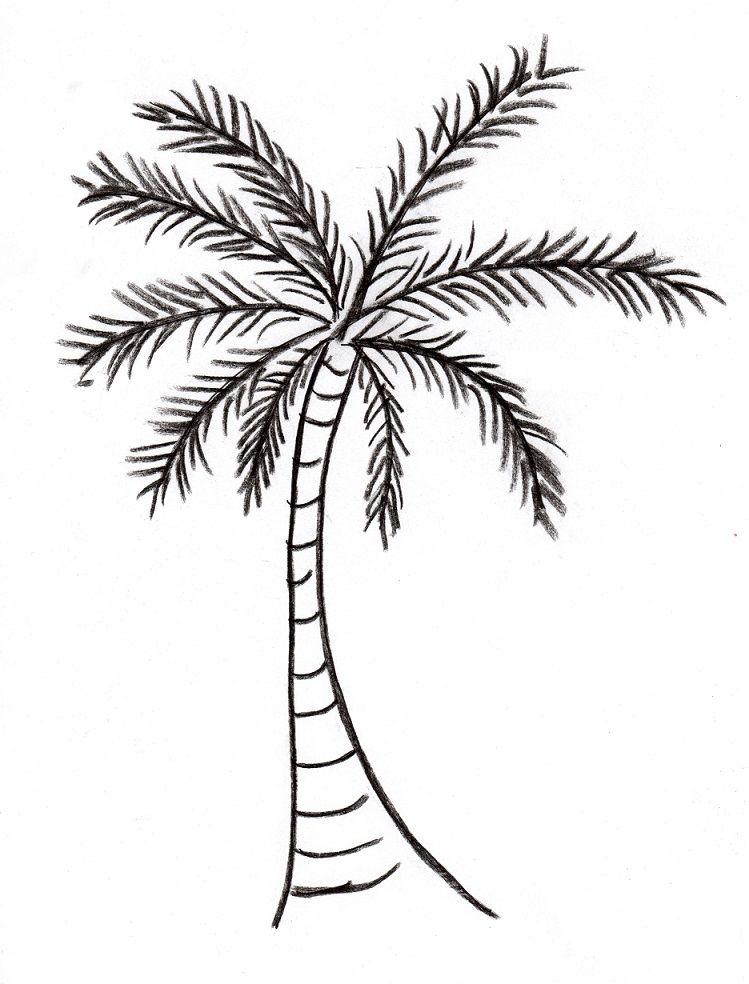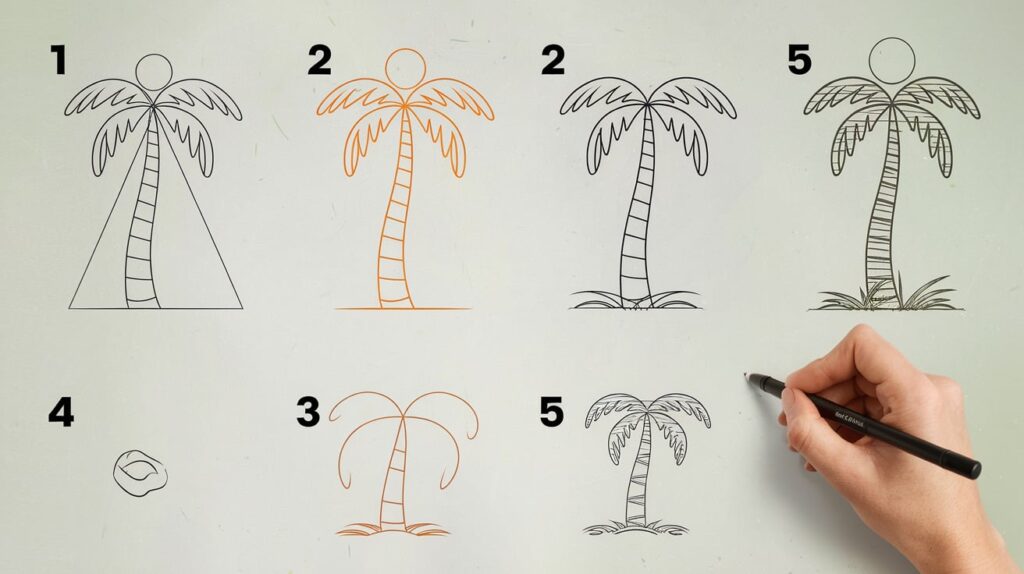Learning how to draw a Palm tree can help you if you are drawing a beach, scenery, a house, or any other illustration related to nature. It always depicts the beach, sandy environment. All over the habitat, there are 2600 varieties of a big or small palm tree. They are not only found near seashores but also in the plain plateau, rain forest, and desert areas. They are the source of natural beauty, food, and fiber to the world.
It is also part of the flags of South Carolina, Florida, and Saudi Arabia which delivers its importance to human life. In many cultures, it is used as a symbol of victory, abundance, fertility, and peace. Thus learn this super easy palm tree drawing and enjoy it.
How to draw Palm Tree:
Step 1: Draw 2 long parallel lines depicting the long trunk of the tree. Draw these 2 lines parallel and closer to each other on the top and a little apart at the bottom near the base.
Step 2: In this step start drawing the upper part, for this step draw 5 lines from the trunk in different directions. Don’t make straight lines keep them curvy as it is the base for leaves.
Step 3: Start drawing the leaves of the tree, around the first line draw curve from tip to bottom on both sides. Then repeat the curve with the second line also. You only need to keep in mind that these curves must be of random shape and size.
Step 4: Continue this leaf curve to the 3rd and 5th line, draw few tips pointed. 5th line overlaps trunks.
Step 5: In this step change the angle of the leaf. Draw a single curve for these leaves and also draw some more leaf strands in between the already drawn leaves.
Step 6: To give leafs shape draw small triangles all over the borders of the leaf. These will work as guidelines in the further drawing.
Step 7: At the point where leaves are emerging draw overlapping circles depicting the palm fruit.
Step 8: Erase all the guidelines drawn in step 6 for the leaf. Border lying outside of the triangle erase them and you will get a jagged look and darken the outlines.
Step 9: Draw flat horizontal lines on the trunk.
Step 10: Color the leaves of the tree with green and use brown for the trunk and fruit.
How to draw cartoon Palm Tree for kids:
Step 1: Start your drawing with a trunk, for this draw 2 long curved lines forming a flattened triangular shape with the top open-end and curved closed end.
Step 2: Secondly, draw small curves all along the trunk, this will give the trunk a realistic look.
Step 3: On the end of the trunk draw roots with many random curvy lines.
Step 4: On the top of the trunk draw 3 circular shapes to add fruits. By drawing these fruits your trunk opening will become close.
Step 5: Lastly palm tree is incomplete about leaves, draw 2 curved lines from the fruits and form a single leaf, do the same for other leaves. Make borders of these leafs jagged. Draw 5 to 8 leaves pointed leaves on your tree.
Your palm tree drawing is complete in these easy and simple steps.
How to draw Palm Tree step By step
Below is a few more step-by-step guidance to draw a palm tree. Drawing these is easier as it has a simple pattern. You need a paper, pencil and start with the given tutorial.
Illustration 1:
Illustration 2:
Here’s a detailed step-by-step guide on how to draw a palm tree:
1. Draw the Trunk
- Start with the Base: Begin by drawing a curved vertical line for the trunk. Make it slightly wider at the bottom and narrower towards the top.
- Add Texture: Draw horizontal, slightly curved lines across the trunk to create texture and show the segmented, rough bark of the palm tree.
2. Draw the Palm Leaves
- Create the Fronds: At the top of the trunk, draw several long, curved lines extending outward. These lines will be the central veins of the palm leaves.
- Add Leaf Details: From each central vein, draw additional lines that curve outwards and upwards. These lines should fan out and be shorter towards the end of each frond.
- Draw the Leaf Edges: Connect the outer lines with curved, wavy lines to form the edges of the palm leaves. These edges should be jagged or serrated to mimic the appearance of real palm fronds.
3. Detail the Leaves
- Add Texture: Draw smaller, parallel lines along each leaf segment to give them texture and detail.
- Shade and Shape: Lightly shade the fronds to add depth. The shading should be darker at the base of each frond and lighter towards the tips.
4. Draw Additional Leaves (Optional)
- Layering: For a fuller look, draw additional layers of fronds behind the first set. Make sure they overlap slightly and vary in size to create a natural, dense appearance.
5. Add the Ground
- Base Line: Draw a horizontal line at the bottom of the trunk to represent the ground where the palm tree stands.
- Texture: Add some small, uneven lines or patches around the base to suggest sand or soil.
6. Add Extra Details (Optional)
- Coconuts: If desired, draw small circles or ovals hanging from the fronds to represent coconuts.
- Background Elements: You can also include additional elements like a beach, ocean, or sun in the background to enhance the scene.
7. Final Touches
- Review and Refine: Check your drawing for any inconsistencies or areas that need more detail. Adjust lines, shading, and textures as needed.
- Erase Unnecessary Lines: Clean up any construction lines or extra marks that are not part of the final drawing.
By following these steps, you’ll create a detailed and realistic palm tree drawing.

Skilled teacher, knowledgeable in and in adapting state content standards to individual needs in
Elementary-6th grade classrooms. Utilizes instructional materials, technology, and teaching methods to
engage students in effective learning opportunities in individual, small group, and whole-group settings to
maximize instructional time. Differentiates instruction for ELLs while exposing them to rigorous content,
with a focus on literacy skills in all subject areas. Establishes and maintains appropriate standards of
behavior in an inclusive and respectful environment for students from all socio-economic and cultural
backgrounds. Develops lesson plans using Backwards Planning Method to align content standards and
assessments with effective learning activities. Communicates and collaborates effectively with staff and
parents, and creates a safe and positive learning environment for students. Has taught in both in-person
and virtual environments. Professional Communicator with 20+ years of experience.


